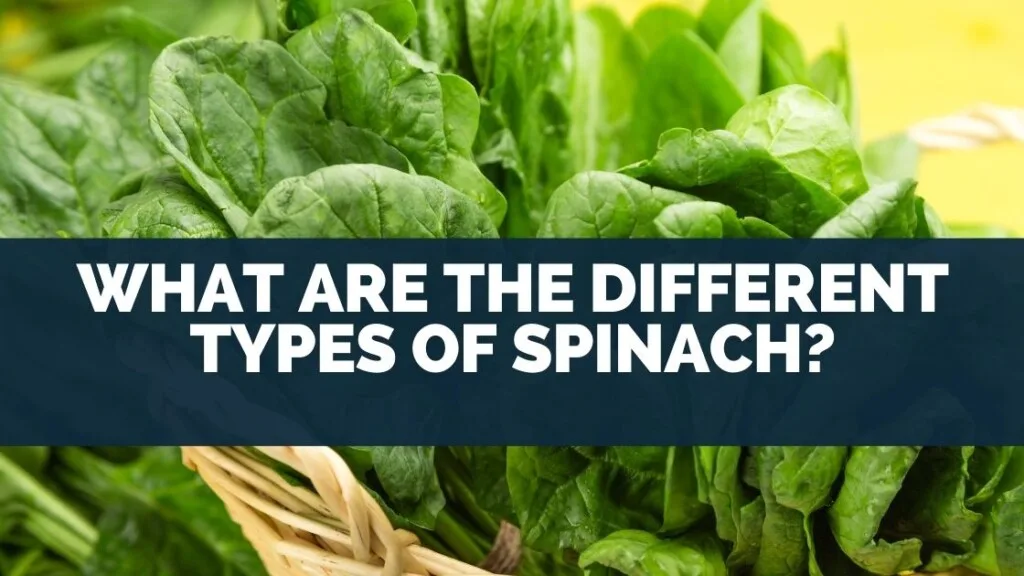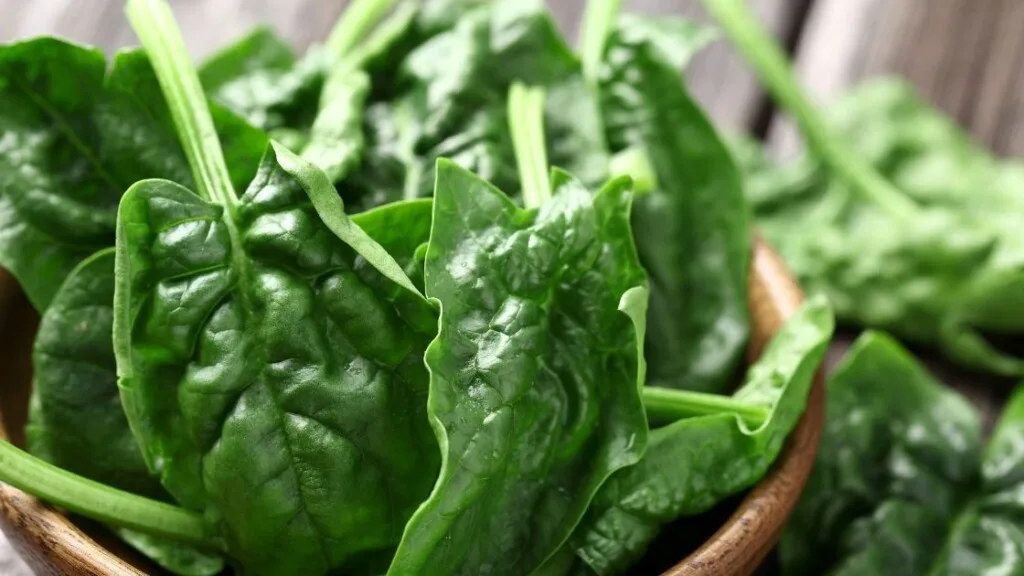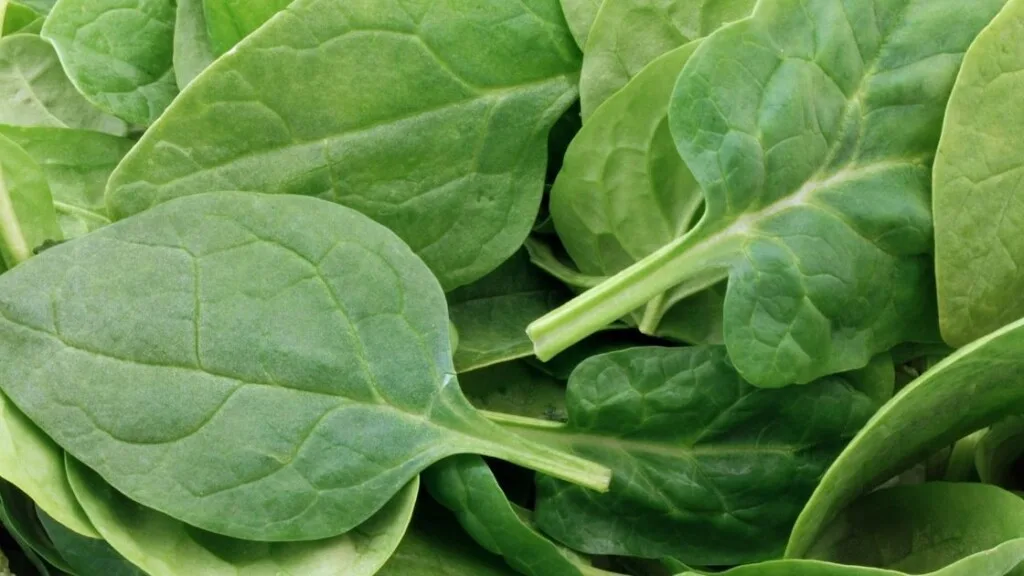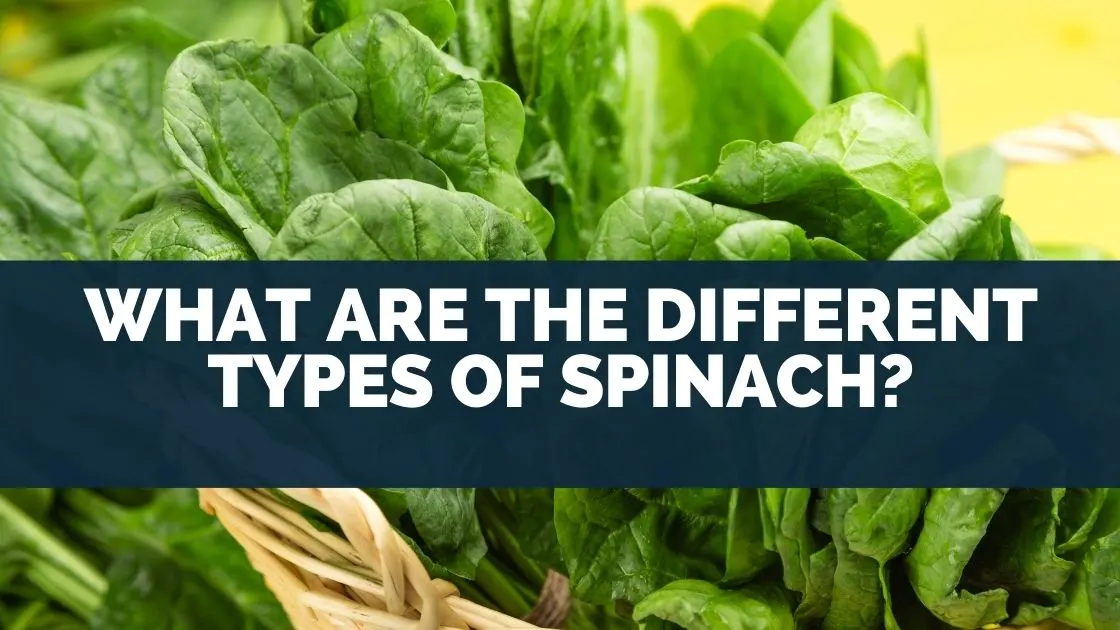
Spinach is used in a wide range of foods. Because it is so common, it is both cheap and healthy to cultivate in your garden rather than to buy from shops. Buying from stores also restricts the types of plants you may try since only popular ones are available.
There are a number of varieties of spinach with varying tastes and appearances. Some people use the same spinach type for all of their culinary demands, such as in smoothies. The same spinach might still provide delicious tastes when utilized throughout the cooking process.
Imagine how much better your food will taste if you use a type that’s best suited for smoothies, stir-fries, and other meals.
Table of Contents
What is Spinach?

Spinach is a leafy green vegetable that belongs to the Amaranthaceae family. It is used as a food source, and its leaves can be eaten because they don’t have much of a flavor.
The stem and the flower are also edible. The leaves are often added to salads and used as a pizza topping, but the vegetable is also the primary ingredient in popular dishes such as spanakopita.
The spinach plant has long, oval leaves that resemble an oak leaf. Spinach is packed with essential minerals, vitamins, antioxidants, and various health-boosting benefits.
Different Types Of Spinach

Spinach comes in three distinct varieties: savoy, semi-savoy, and flat-leafed. Each of these sorts is broken down into many other categories that flourish best in particular temperature ranges and seasons.
If you want to learn more about various types of spinach, go down to the section below.
1. Savoy Spinach
Spinacia oleracea, popularly known as savoy spinach, is a kind of spinach. Intense dark green curled leaves with a crunchy and crisp feel. Savoy spinach has a richer flavor and texture than regular spinach.
Due to its disagreeable flavor, people prefer to prepare it. Fresh savoy spinach is widely available in green bunches, but it is also available frozen or canned.
Savory spinach leaves are usually 5-6 inches long, which makes them ideal for salads. Savoy spinach is abundant in beta carotene, folate, and vitamin C. Studies show that two cups of raw, chopped savoy spinach contains only 13 calories.
There are two types of Savoy Spinach:
1.1 Regiment Spinach
This plant is a hybrid with thick, broad leaves. It grows best in the spring and fall. This type of spinach grows in just 37 days. The seedlings are shaped like an arrow in dark green and have a strong flavor. Because of its robust flavor, this wonderful kind of savoy spinach can be prepared in a variety of ways.
It has a delicate and crisp taste and feels when it is raw and fresh. It can also be sautéed or braised as a side dish in creamy sauces, pasta sauces, or soups.
1.2 Bloomsdale Spinach
Bloomsdale is a spinach variety that dates back to the 1800s. It features dark-green leaves that are tall and curled. Sow the seeds in the spring in a sunny location. Water the plants when it’s dry to keep them alive.
During the growing season, it may require 1-1/2 inches of water every week to stay healthy. Always use a rain gauge to determine how much water is present. Cut the leaves when they reach three inches in length. Cut the young leaves when they are two inches long.
2. Semi-Savoy Spinach
Semi-savoy spinach has the same crisp texture and taste as savoy spinach. It is, however, crinklier than savoy spinach and therefore simpler to clean.
This is the best choice for home cultivation because it is disease-resistant. This spinach is loaded with nutrients like lutein, glutathione, beta-carotene, omega-3 fatty acids, calcium, iron, vitamins A, C, and E.
This fully crispy spinach comes in four various kinds, as follows:
2.1 Tyee
Tyee spinach has thicker, darker green leaves than savoy. Tyee spinach, a semi-savoy spinach family member, is delicious raw or cooked.
In the fall and early spring, tyee is best grown and harvested when temperatures surpass 40°F. If you can’t plant Tyee over the winter, its seeds can be sown in late April.
2.2 Catalina
Catalina, sometimes called baby spinach, is a mild-flavored soft green vegetable. The heat-resistant veggie matures in just 40 days. Planting doesn’t have to wait until the summer heat. In the cooler months of spring or fall, when temperatures range between 45 and 75 degrees Fahrenheit, Catalina thrives.
2.3 Teton
Teton has dark green, highly sensitive leaves. It grows quickly and may stand alone.
Teton lacks the ability to bolt, which plants need to survive the summer heat. So, plant Teton seeds in the cooler months. Their ability to produce Teton spinach may be threatened.
When completely grown, Teton spinach is 6 inches long. It is high in vitamins A, C, and B-complex, as well as fiber. Each Teton seed must have a 2-inch gap. The seeds must be completely covered in the earth.
2. 4 Indian Summer
Indian summer is one of several types of semi-soy spinach available. It is an easy plant to grow, with dark green leaves that are 10 to 12 inches long.
Similarly, the fall and spring seasons are ideal for cultivating Indian summer. In 35 to 40 days, the easy-to-grow spinach is ready for harvest.
3. Smooth-Leaf Spinach
This has broad, flat green leaves that are easier to clean than savoy or semi-savoy spinach cultivars. Flat-leaf spinach is a favorite of home gardeners and foodies alike due to its versatility and nutritional value.
It is usually offered canned or frozen in stores since it develops faster and can be kept for a longer amount of time. It has a delicate, sweet flavor and is frequently available in big amounts. Flat-leaf spinach, in addition to its exquisite flavor, has a slew of health benefits, including aiding in the reduction of body fat, eye and bone health, and weight loss.
Flat-leaf spinach comes in two varieties:
Spinach in Space
The scientific name for space spinach is “Spinacia oleracea,” and it grows in a wide range of soil conditions, from dry to damp to fertile. However, because it is acid-sensitive, it requires a pH range of 6.5 to 7.5. Space spinach, like other types of spinach, germinates better in cooler weather, which is why it is ideal to sow its seeds in early spring.
Red Cardinal Spinach
Red cardinal spinach, as the name implies, is red spinach with red veins and stems that resemble beet leaves.
It’s best to harvest red cardinal spinach when it’s young because it bolts faster than any other spinach. Red cardinals grow in 21 to 32 days during the spring and summer, and 25 to 35 days during the fall and winter. The ideal temperature for growing red cardinal is 45 degrees to 75 degrees Fahrenheit, with at least 6 hours of daily sunlight and a moderate amount of water.
You can also read: How Much Spinach A Day Is Safe?
So, how about you? Which of these have you yet to encounter? Go ahead and buy them today so you can make a meal or two out of them!


Leave a comment